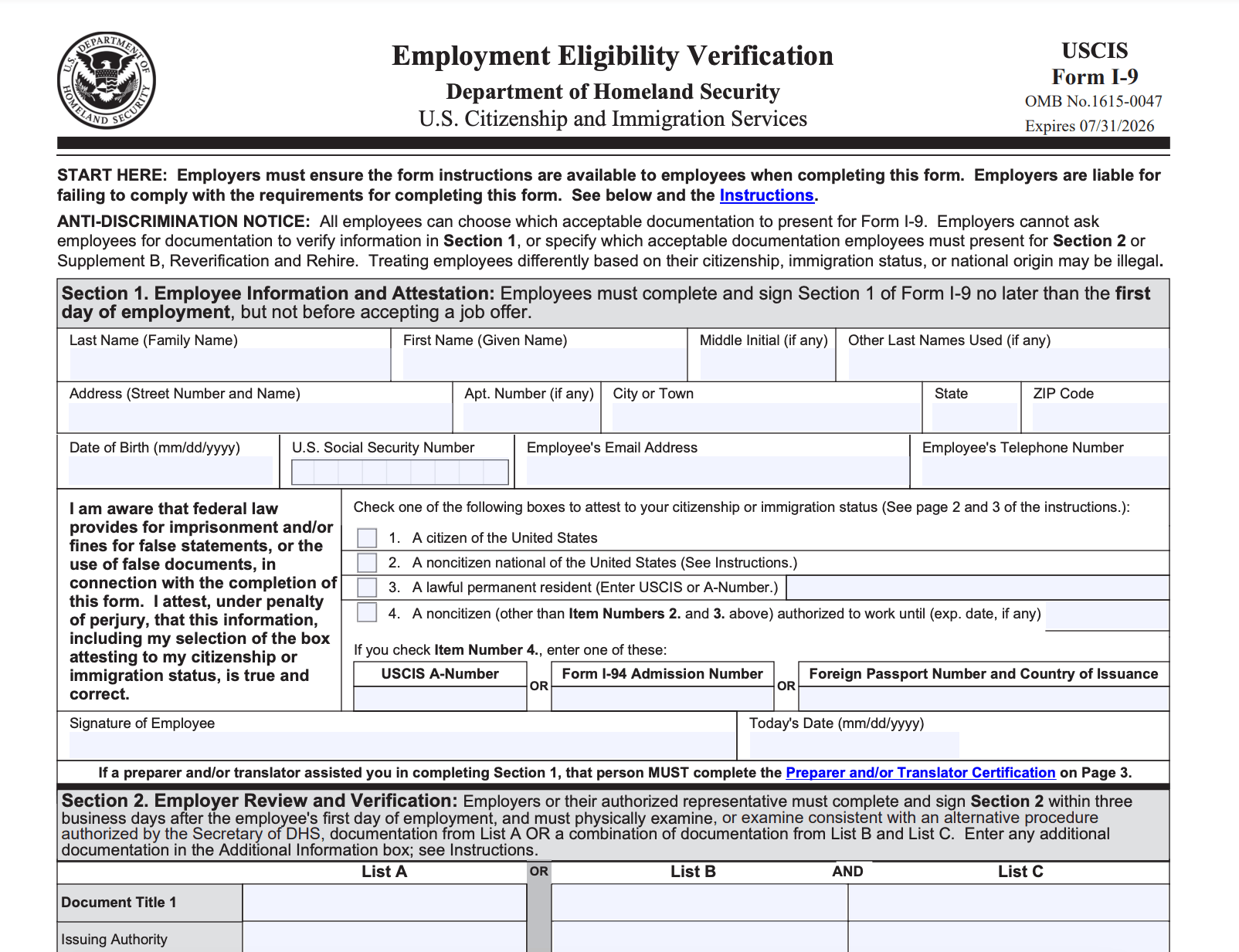Form I-9, Explained
Learn how to fill out the employment eligibility verification form
What Is Form I-9?
Form I-9, officially called the “Employment Eligibility Verification” form, is used to verify the identity and employment authorization of individuals hired for employment in the United States. Employers are required to complete this form for all employees, including U.S. citizens and foreign workers.
Important:
In July 2023, U.S. Citizenship and Immigration Services (USCIS) announced a new version of Form I-9, which includes significant changes and updated instructions. Learn more about the changes here.
Who Needs to Complete Form I-9?
Every employer in the United States, regardless of the size or type of business, is required to complete Form I-9 for each employee hired. This includes both citizens and non-U.S. citizens who are authorized to work in the United States. Employers must retain completed forms for a specified period and make them available for inspection upon request by government agencies.
Sample I-9 Form

Cost of Form I-9
There is no fee associated with Form I-9. Employers can obtain the form for free from the USCIS website (uscis.gov) or by contacting the USCIS Forms Line at 1-800-870-3676.
How to Fill Out Form I-9
Steps to filling out Section 1 (Employee)
- The employee must complete Section 1 of Form I-9 no later than the first day of employment.
- The employee must provide their full legal name, contact information, and attest to their citizenship or immigration status.
- The employee must also provide documents that establish their identity and employment eligibility. Acceptable documents are listed on the form, and employees must choose from these options.
- The employee must sign and date Section 1.
Steps to filling out Section 2 (Employer)
- Within three business days of the employee’s first day of work, the employer must complete Section 2.
- Examine the employee’s provided documents for authenticity and completeness.
- Record document information, including document type, issuing authority, and expiration date.
- Sign and date Section 2.
Steps to filling out Section 3 (Employer, as needed)
- Section 3 is used for rehires and reverification of employees with expiring employment authorization.
- Employers should complete Section 3 when necessary and retain it with the original Form I-9.
Employers should follow the detailed instructions provided with Form I-9 and keep completed forms for the duration of the employee’s employment, plus one year, or three years from the date of hire, whichever is longer.
Frequently Asked Questions
Yes, Form I-9 can be completed and stored electronically, provided all requirements for electronic signatures and storage are met as outlined in the USCIS Handbook for Employers.
No, employees must provide unexpired documents to establish their identity and employment eligibility.
Failure to complete or retain Form I-9 can result in fines and penalties for the employer. It is essential to comply with the requirements.
No, employers must allow employees to choose which acceptable documents they wish to present from the lists provided on Form I-9. Discrimination based on document choice is prohibited.
No, Form I-9 must be completed in English. Only employers located in Puerto Rico may completed to the Spanish version of Form I-9.